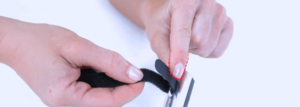Easy Sprained Wrist Treatment Options
Home Treatment Medical Treatment Recovery Tips Safety
Sprained wrist treatment can be as simple as rest, ice, compression, and elevation or it may need medical treatment from a doctor or surgeon. Whether your symptoms are mild or severe, it’s important to find the right treatment for the bruising, pain, and swelling of this condition before they leave a lasting impact on your life. Find the most effective sprained wrist treatment for you here.
Treatment at Home
Many times mild wrist sprains can be treated at home with standard care. However, we always recommend getting medical advice before treating your wrist injuries.
RICE Method
Rest, ice, compression, elevation. This acronym is the basis of care for so many joint injuries, including wrist sprains. Read on to learn more about RICE and how it can help you.
- Rest
- Stop doing activities or movements that hurt your wrist. You may need a wrist splint as a reminder to keep your wrist still. Rest will give those injured ligaments time to heal and let the swelling and pain go down. Though resting can be hard, it is an incredibly important part of the treatment process.
- Ice and Heat
- Ice and heat are two complementary therapies that are both inexpensive and effective. Ice is used immediately after the injury to reduce swelling and pain. Place an ice pack over the injured wrist or submerge it in a cold bath. After the initial injury phase has passed you can use heat on your wrist.
- A heating pad or warm towel will increase blood flow to the area and improve healing time. Be careful with ice and heat as they can hurt your skin if left on for too long.
- Learn How to Properly Alternate Hot & Cold Therapy
- Compression
- Compression for a sprained wrist will reduce the swelling and pain by lessening the amount of fluid that pushes into the surrounding tissue. It will also encourage blood to return to the heart and help avoid blood pooling from any broken blood vessels. You can compress your wrist with a compression bandage or splint. Avoid compressing your wrist too much, you don’t want to restrict blood flow or cause damage to the area.
- Here is an excellent resource on how to wrap a sprained wrist.
- Elevation
- Elevating your wrist above the level of your heart will help reduce venous pooling and swelling. To elevate your wrist, lay down on a couch or bed and place a couple of pillows under your hand. Try to elevate your wrist soon after your injury and any time you are sleeping or relaxing to promote healing.
Stretches and Exercises
Wait until you can move your wrist without pain and are cleared by your doctor or physical therapist before you start an exercise routine. Strengthening exercises to work the muscles surrounding your wrist will help you regain strength and reduce the likelihood of reinjury. Stretching exercises will help you regain your range of motion and minimize scar tissue from forming.
Read this article to learn more about wrist sprain exercises and how they can help you.
Taping and Bracing
Treating your sprained wrist at home with tape and a brace can restrict your movement, letting your injury heal without causing further injury. After your sprain, you’ll want to choose a wrist brace that eliminates movement. After your wrist has had some time to heal taping may be a better option. Taping doesn’t restrict your fingers from moving and has a little bit of flexibility with it.
How to Choose the Best Wrist Brace for Your Injury
Painkillers
It’s important to manage your pain after you’ve sprained your wrist. For most patients, over-the-counter nonsteroidal anti-inflammatory drugs (NSAIDs) like ibuprofen (Advil) and naproxen (Aleve) are enough to take the edge off and let them rest. Always talk to your doctor or pharmacist before you start a new medication to avoid any unwanted side effects.
Medical Treatment
Moderate or severe sprains will likely need medical treatment to help the ligaments heal properly. Take a look below to learn more about what to expect during your medical treatment.
Splints and casts
When you have an injured wrist a splint or cast will immobilize the wrist joint to prevent the injury from getting worse. They have hard sides and won’t move to restrict all of your wrist movement. You should avoid wearing splints for too long as they can cause your wrist joint to become stiff and your surrounding muscles to become weak.
Physical Therapy
A physical therapist is a great resource when you’re recovering from a wrist sprain. They will teach you how to modify your movements to prevent reinjuring your wrist and specific stretches and exercises to help with healing. If you need wrist surgery, a physical therapist will guide you through your recovery to regain your range of motion and work to get you back to doing the activities you enjoyed before your injury.
Surgery
Surgery is reserved for the most severe sprains. If you have a ligament tear then surgery may be necessary. Your surgeon will review your case and determine the best surgical procedure based on the severity of the injury and your desired outcomes.
Recovery Tips
After you’ve sprained your wrist all you want to do is to get back to all your favorite activities. We want you to get better as fast as possible so we’ve compiled these recovery tips to help you do just that.
- Follow your doctor’s orders
- Avoid painful activities and movements
- Wear wrist protection
- Stretch and exercise as directed
- Let your wrist rest as often as needed
How Long Does it Take to Recover From a Wrist Sprain?
If you had a mild sprain that you were able to treat at home, you can expect the recovery to take two to four weeks. A more severe sprain that needs medical attention can take up to 10 weeks to heal. And if you needed surgery then recovery can take anywhere from 2 to 12 months. Your doctor will be your best resource for estimating your recovery time.
Safe and Effective Wrist Sprain Treatment
A sprained wrist is more than just a pain. It’s an injury to your ligaments and soft tissue that can cause long term damage if not treated correctly. Always talk to your doctor to help you determine the severity of the injury and proper treatment. Thankfully, home treatment can manage most mild sprains but moderate to severe sprains may need medical intervention.







